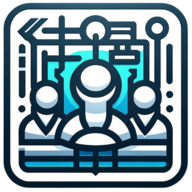How Do You Decide Which Features to Prioritize as a U3 Designer?
Diving into the world of user experience design, this article brings forth the strategies professionals use to prioritize features effectively. With contributions from seasoned U3 designers, readers will gain a clear understanding of how to identify key problems and focus on core functionality. The insights shared here are particularly tailored for those shaping the future of mobile banking apps.
- Identify Problems and Design Concept
- Prioritize Features for Mobile Banking App
- Focus on Core Functionality First
Identify Problems and Design Concept
To describe the decision-making process of how the new features are prioritized in our team, we will look at the example of our newly released Team Productivity report. It was a highly requested report aimed at helping supervisors of the call centers track agent sessions and time spent in different statuses.
Identifying problems & designing concept
To identify the most significant features in agent tracking, we first analyzed customer feedback, stakeholder requirements, and rival solutions. The research revealed that our users struggled with a lack of transparency in session data, making it impossible to track working hours and time spent in various stages. This results in an inability to determine an employee's hourly compensation, monitor worker productivity, and more efficiently schedule work hours.
Based on these findings, we created a comprehensive report concept that included session tracking (login and logout time), detailed status breakdowns (which allowed us to aggregate sessions by agent, day, week, month, quarter, and other categories), custom status management, and advanced analytics.
However, after consulting with product managers, engineers, and other stakeholders, we assessed the technical feasibility and business impact of each feature. To analyze this, we used the Value/Complexity and MoSCoW models, as well as aligned priorities to guarantee that high-impact, low-effort items were provided first. Then, due to the feature's complexity, we chose to divide the concept into numerous independent iterations rather than delaying the full release, balancing immediate value delivery with long-term product objectives. As a result, the final phase of the concept design involved refining the features and aligning them with our design system, guaranteeing consistency without needless complexity while allowing for flexibility for innovation as needed.
Incremental delivery & continuous prioritization
During the initial phase, we implemented the basic agent session tracking feature. The functionality allows users to monitor session start and finish timestamps over a specific period, as well as time spent in various default statuses. This added immediate benefit while setting a foundation for future enhancements.
This continual cycle of research, prioritization, and iteration guarantees that we provide real enhancements while neither delaying critical functionality or overloading development resources.

Prioritize Features for Mobile Banking App
Prioritizing features in UX design is all about balancing user needs, business goals, and technical feasibility. One common framework for decision-making is the RICE Scoring Model (Reach, Impact, Confidence, Effort), but here's a real-world example of how it plays out:
Example: Prioritizing Features for a Mobile Banking App
Imagine you're designing a mobile banking app, and your team is considering two features:
Biometric Login (Fingerprint/Face ID) - Enhances security and convenience.
Personalized Budgeting Insights - Helps users track spending and manage finances.
Decision-Making Process:
User Research: Surveys show that 80% of users prioritize security, while 60% want budgeting tools.
Business Goals: The bank aims to increase daily app usage and improve security compliance.
Technical Feasibility: Biometric login is easier to implement, while budgeting insights require complex AI modeling.
Impact vs. Effort: Biometric login scores higher in impact (security & trust) and lower in effort compared to budgeting insights.
Final Decision:
Biometric login is prioritized first because it delivers a quick win with high impact and minimal effort.
Budgeting insights are planned for later, possibly in Phase 2, with deeper user testing.

Focus on Core Functionality First
As a creative designer, prioritizing features during the UX design phase requires a delicate balance. Designers must consider user needs, business goals, and technical feasibility. One approach I often use is the MoSCoW method-categorizing features into must-haves, should-haves, could-haves, and won't-haves.
For example, while working on a mobile app for a fitness startup, we conducted user interviews. We discovered that users wanted advanced workout analytics (a "Could-have"). Yet, their primary need was a seamless way to track basic workouts and progress (a "Must-have"). By focusing on the core functionality first, we ensured the app was intuitive. It met immediate user expectations. This approach led to higher engagement. The feedback was positive during testing.
This process taught me that prioritizing features isn't just about what's flashy or innovative. It's about solving the most pressing problems for your users. It must align with the project's scope and timeline. Always start with the essentials and build from there.


